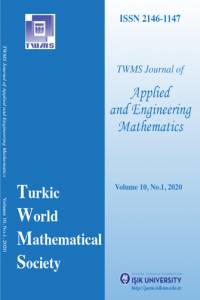A PREDICTION REGARDING THE WEAKENING OF THE BLUE SHIFT OF LIGHT FROM GEOSYNCHRONOUS SATELLITES
A PREDICTION REGARDING THE WEAKENING OF THE BLUE SHIFT OF LIGHT FROM GEOSYNCHRONOUS SATELLITES
___
- Anderson, J. D., Campbell, J. K., Ekelund, J. E., Ellis, J. and Jordan, J. F., (2008), Physical Review Letters, 100, 091102.
- Yarman,T., (2004), AFLB, Vol 29 (3).
- Yarman,T., (December, 2006), Foundations of Physics Letters, Volume 19.
- Yarman,T. and Rozanov, V. B., (2006), International Journal of Computing Anticipatory Systems, Partial Proceedings of the Seventh International Conference CASYS’05 on Computing Anticipatory Systems, Lige, Belgium, August 8-13, 2005, D. M. Dubois (Editor), Published by CHAOS, Volume 17, pp. 172-200 (ISSN 1373-5411, ISBN 2-930396-03-2).
- Yarman,T., Rozanov, V.B. and Arik, M., (2-5 July 2007), The Incorrectness of the Principle of Equivalence and the Correct Principle of Equivalence, Physical Interpretation of Relativity Theory Conference, Moscow.
- Yarman,T., (May 2009), Revealing The Mystery of The Galilean Principle Of Relativity, Part I: Basic Assertions, International Journal of Theoretical Physics, 10.1007/s10773-009-0005-2.
- Einstein, A.,(1953), The Meaning of Relativity, Princeton University Press.
- Sobczyk, G. and Yarman,T., (2008), Unification of Space-Time-Matter-Energy, Applied and Compu- tational Mathematics, An International Journal, Volume7 (2), 255-268.
- Mould, R. A., (1994), Basic Relativity, Springer-Verlag Newyork Inc.
- Newton, I., (1686), Principia, Book III.
- Planck, M., On the Law of Distribution of Energy in the Normal Spectrum, Annalen der Physik, Vol. 4, p. 553.
- Einstein, A., (1905), Does the Inertia of a Body Depend Upon Its Energy Content?, Annalen der Physik 18: 639-641.
- K¨undig, W., (1963), Phys. Rev. 129, 2371.
- Kholmetskii, A. L., Yarman,T., Missevitch, O. V., (2008), K¨undig’s Experiment on the Transverse Doppler Shift Re-Analyzed, Physica Scripta, 78.
- Kholmetskii, A. L., Yarman,T., Missevitch, O. V. and Rogozev, B. I., (2009), A M¨ossbauer Experiment in a Rotating System on the Second-Order Doppler Shift: Confirmation of the Corrected Result by K¨undig, Physica Scripta, 79 065007.
- Yarman,T., (2005), Proceedings of International Meeting on Physical Interpretation of Relativity Theory, Moscow, 4 - 7 July 2005 / Edited by M.C. Duffy, V.O. Gladyshev, A.N. Morozov, P. Rowlands - Moscow: BMSTU PH.
- Yarman,T., (1999), Invariances Based on Mass And Charge Variation, Manufactured by Wave Me- chanics, Making up The Rules of Universal Matter Architecture, Chimica Acta Turcica, Volume 27. [18] Yarman,T., (2004), Optics & Spectroscopy, 97 (5), 683.
- Landau, L. D. and Lifshitz, E. M., (1999), ”The Classical Theory of Fields”, Chapter 10, Paragraph 88, Butterworth & Heinemann.
- Metin Arik graduated from Istanbul University Faculty of Science in 1969 with a diploma degree in Physics with minors in Mathematics.
- ISSN: 2146-1147
- Başlangıç: 2010
- Yayıncı: Turkic World Mathematical Society
Tamaz TADUMADZE, Abdeljalil NACHAOUİ
GENERALIZED 2+1 −DIMENSIONAL BREAKING SOLITON EQUATION
A PREDICTION REGARDING THE WEAKENING OF THE BLUE SHIFT OF LIGHT FROM GEOSYNCHRONOUS SATELLITES
Tolga YARMAN, Metin ARİK, Alexander KHOLMETSKİİ
ON COMPLEX MULTIPLICATIVE DIFFERENTIATION
Agamirza E. BASHİROV, Mustafa RİZA
